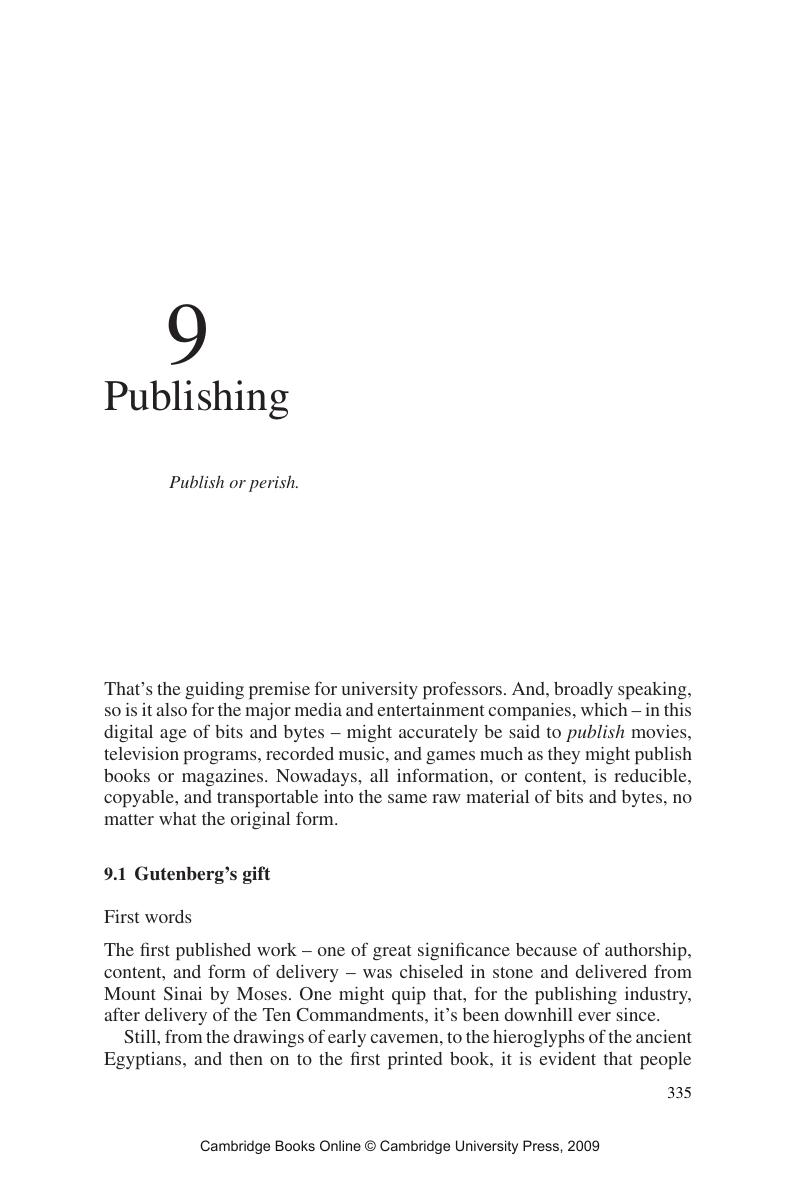Book contents
- Frontmatter
- Contents
- Preface
- Entertainment Industry Economics
- Part I Introduction
- Part II Media-dependent entertainment
- Chapter 3 Movie macroeconomics
- Chapter 4 Making and marketing movies
- Chapter 5 Financial accounting in movies and television
- Chapter 6 Music
- Chapter 7 Broadcasting
- Chapter 8 Cable
- Chapter 9 Publishing
- Chapter 10 Toys and games
- Part III Live entertainment
- Part IV Roundup
- Appendix A Sources of information
- Appendix B Major games of chance
- Appendix C Supplementary data
- Glossary
- References
- Index
- References
Chapter 9 - Publishing
from Part II - Media-dependent entertainment
Published online by Cambridge University Press: 22 August 2009
- Frontmatter
- Contents
- Preface
- Entertainment Industry Economics
- Part I Introduction
- Part II Media-dependent entertainment
- Chapter 3 Movie macroeconomics
- Chapter 4 Making and marketing movies
- Chapter 5 Financial accounting in movies and television
- Chapter 6 Music
- Chapter 7 Broadcasting
- Chapter 8 Cable
- Chapter 9 Publishing
- Chapter 10 Toys and games
- Part III Live entertainment
- Part IV Roundup
- Appendix A Sources of information
- Appendix B Major games of chance
- Appendix C Supplementary data
- Glossary
- References
- Index
- References
Summary

- Type
- Chapter
- Information
- Entertainment Industry EconomicsA Guide for Financial Analysis, pp. 335 - 354Publisher: Cambridge University PressPrint publication year: 2007



